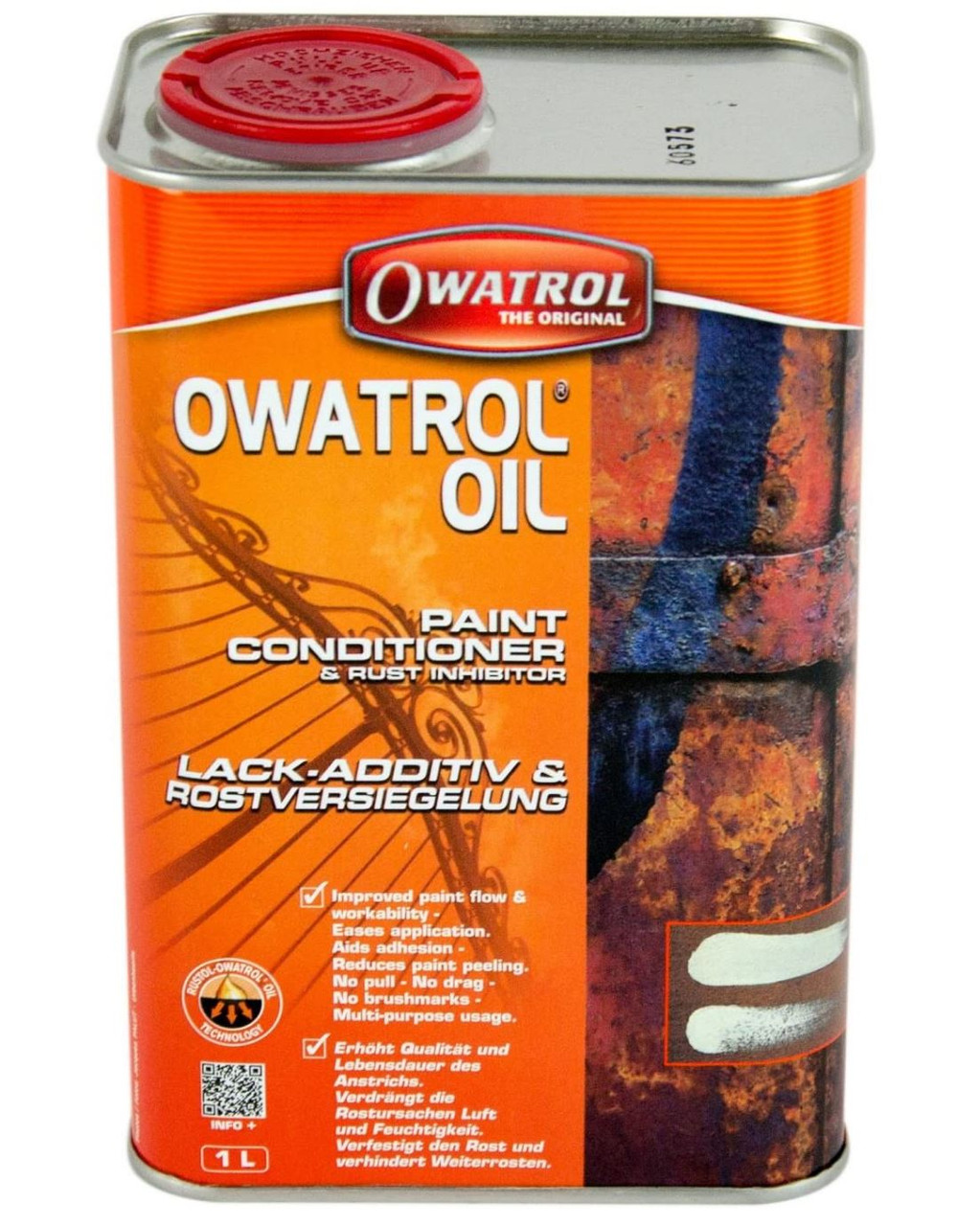
Owatrol Oil 1L
We do offer Local Delivery for customers living close to IWP.
If you think you might qualify for local delivery please call us on 061 221100.
Owatrol Oil is versatile, highly penetrating airdrying oil that can be used alone or added to paint. Used alone as a rust inhibitor it provides a tough, flexible finish, driving out excess moisture and air; displacing it from rusted metal, so stopping rust dead in its tracks. Used alone on porous wood surfaces it will saturate and protect the wood from damage caused by moisture and prevent paint from peeling.
Ideal Uses for Owatrol Oil
• Priming galvanised surfaces with no need for weathering or pickling
• Preventing further damage in heavily rusted surfaces
• Improving paint flow when working in cold environments
• Preventing peeling paint on wood surfaces
• Protecting metal part on wood surfaces like gates and window frames
• Assuring better adhesion of finishes
When added as a paint conditioner to any oil or alkyd-based coatings it will give increased wet edge time, improved flow and greater adhesion. Unlike damaging thinners, it will maintain the inherent quality of the paint without affecting its appearance or drying times, allowing you to achieve a more professional finish.
Using Owatrol Oil as a rust inhibitor
Owatrol Oil penetrates through the rusted metal to the sound metal below, isolating it and protecting it from further rusting. Directly use on rusted surfaced – the penetrating oil drives out moisture and air and stabilises the metal to protect it from future damage.
Using Owatrol Oil to aid adhesion
A bonding film is left on all surfaces Owatrol Oil is used on which maintains the natural look of the surface but allows enhanced adhesion, making it perfect as a foundation for primers or finishing coats. It gives excellent adhesion including on galvanised steel, aluminium, zinc, wood and more. Paint can be applied directly to firm rust when Owatrol Oil is used and is heat resistant up to +175°C.
Using Owatrol Oil as a paint conditioner
Mix Owatrol Oil into oil-based paints as a paint conditioner to get several great benefits. Firstly, it gives the paint rust inhibiting properties and helps prevent rust on painted surfaces (even when rust is already present). Secondly, it also improves the flow and workability of the paint. This means that you can maintain the ‘wet edge’ for longer, reducing brush and roller marks. Finally, it gives the paint a better viscosity allowing painting work to be carried out in a more extreme cold, hot and windy conditions. Unlike damaging paint thinners, it does all this without altering the inherent qualities or the finish of the paint.


